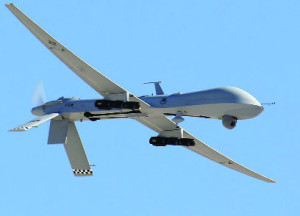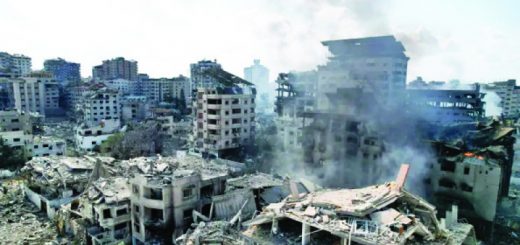Age of Drones
Zaidul Hasan
 For many years men have had the will to fly. They tried to fly like birds. They made big wings and tied them with their body. Then they ran along and tried to fly with those wings. After a lot of failure men realized that it’s not easy for human being to fly like a bird. So they started to think for other ways to fly. A lot of experiments were done. Then came the ultimate solution to men’s dream. Human being was able to fly using some engine power. Aeroplanes were invented. People started to fly. Distance became shorter. Going to far places got a lot easier once the aerial routes were established. Bigger and better airplanes became available day by day as the technology got developed. Airplanes got recruited in defense system along with the commercial lines to protect countries air space. Defense force’s planes had the special features of heavy firearms like machine guns and missiles. Planes that can fly in the speed of sound were made. Till then the planes have been operated by a pilot, a human aboard on the plane. But then came the newest technology- the UAV.
For many years men have had the will to fly. They tried to fly like birds. They made big wings and tied them with their body. Then they ran along and tried to fly with those wings. After a lot of failure men realized that it’s not easy for human being to fly like a bird. So they started to think for other ways to fly. A lot of experiments were done. Then came the ultimate solution to men’s dream. Human being was able to fly using some engine power. Aeroplanes were invented. People started to fly. Distance became shorter. Going to far places got a lot easier once the aerial routes were established. Bigger and better airplanes became available day by day as the technology got developed. Airplanes got recruited in defense system along with the commercial lines to protect countries air space. Defense force’s planes had the special features of heavy firearms like machine guns and missiles. Planes that can fly in the speed of sound were made. Till then the planes have been operated by a pilot, a human aboard on the plane. But then came the newest technology- the UAV.
The UAV, mostly known as ‘drones’ to all; is an aircraft that doesn’t need a pilot on board to fly the aircraft. UAV stands for Unmanned Aerial Vehicle. UAV’s flights can be controlled from the grounds using remote control. It can also be controlled autonomously by computers in the vehicle. UAVs are used mostly in the military operations. As pilots are not needed to be on board to fly the plane, air forces can easily take down tough operations without the fear of losing any of their men’ s lives. UAVs are being used in very few civil operations like firefighting and surveillances too.
Though the drones are in lime lights in recent times, the history of UAV goes quiet a way back. The earliest attempt at a powered unmanned aerial vehicle was in 1916. A number of remote-controlled airplane advances followed during and after World War I. The first scale UAV was developed in 1935. During World War II, more UAV’s were made and were used to train antiaircraft gunners. The experiments were on. Drones as we know them today didn’t properly exist until the tail end of the Vietnam era in the early 1970s. In 1973, Israel made the first modern UAV when Egypt and Syria caused a lot of damage to Israeli aircrafts during Yom Kippur War. Israel pioneered the use of UAVs for real-time surveillance, electronic warfare, and decoys. The images and radar decoying provided by these UAVs helped Israel to completely neutralize the Syrian air defenses at the start of the 1982 Lebanon War without any pilots downed. US military got interested in drones specially in 1980-90s. UAVs that are armed are called UCAV- Unmanned Combat Air Vehicle. The first time an UCAV used in a war was by Iran in late 1980s. At present around 60 countries own drones.
UAVs have a lot of facilities. Equipment necessary for a human pilot such as the cockpit, armor, ejection seat, flight controls, and environmental controls for pressure and oxygen are not needed in a UAV. So the size and weight is much less than a manned aircraft. Some UAVs have become so small that they can be launched from one’s hand. UAVs can fly longer than a manned aircraft as the operator doesn’t feel the physical strain of being abroad and the operator can be shifted anytime. UAVs flying using solar power hold the potential for unlimited flight. And moreover, UAVs cost only a fraction of a manned aircraft. Drones have different types. The common types are: Target and Decoy, Reconnaissance, Combat, Research and Development and Civil and Commercial UAVs.
In recent times drones has come to focus because of the large number of civilian’s death caused by the drones. The United States government has been leading Predator drone attacks on Pakistan, Yemen and Somalia for a few years as a part of what they call- ‘War on Terrorism’. Pakistan had been the most sufferer of drone attacks. Since 2004 Pakistan has been in the news regularly for undergoing drone attack. In these attacks many civilians including women and children has died or become injured. There are estimates that 50 civilian are killed for a terrorist in drone attacks. Since 2004 there have been more than 360 Predator drone attacks in Pakistan. More than 600 civilians died in these attacks, the total death number is around 3000. About 160 children died in these Predator drone attacks. So called ‘War on Terrorism’ has turned into massive kill.
US government started using drones for taking out militants outside of Iraq and Afghanistan in 2002. Since then it is being used as an exclusive weapon. One estimate states, 95 percent of targeted killings since 9/11 have been conducted by drones. The CIA started drone attacks in Pakistan by the permission of President George W. Bush. During President Barak Obama, they have expanded drastically there and in Yemen in 2011. Although there have been criticism from all around the world, the US government kept their drone attacks continued. US government keeps justifying drone attacks and the CIA desires to expand it. There have been claims form the Us government that that drone strikes have killed very few civilians.
The killing of drones has received major criticism. A major criticism of drone strikes is that they result in excessive collateral damage. Most of the drone attacks are lead by the CIA. As the CIA programs are covert, lack of information raises questions to their actions. A confidential Justice Department memo concludes that the U.S. government can order the killing of American citizens if they are believed to be a terrorist, even if there is no intelligence indicating that the suspicion is true. This received a lot criticism.
The uses of drones have the issues of the international laws of war too. This laws place a burden upon participants to limit civilian deaths and injuries through proper identification of targets and distinction between combatants and non-combatants. Autonomous drones don’t specify out the militants and civilians. As a result innocents are dying. So a ground controller must authorize weapons release. Concerns also include the human controller’s role, because if he is a civilian and not a member of the military, which is quite possible with developmental and highly sophisticated weapons systems; he would be considered a combatant under international law which carries a distinct set of responsibilities and consequences. For this reason the drone operator should ideally be a member of the military that understands and accepts his role as combatant
The ‘unmanned’ aspect of UAVs is primarily what sets them apart from manned aircraft. This aspect also raises certain moral concerns. UAVs were made to reduce loss of life. But it is being use to kill innocent people in numbers. When such technology is use to save a pilot’s life, then there is a moral duty to employ it in order to save as many innocent lives as possible.
UAV’s can be used in many civil sectors. Aerial surveying of crops, acrobatic aerial footage in filmmaking, search and rescue operations, inspecting power lines and pipelines, and counting wildlife can be done using UAVs. Using UAVs remote sensing functions include electromagnetic spectrum sensors, gamma ray sensors, biological sensors, and chemical sensors scientific surveys are possible. Aerial surveillance of large areas is possible with low cost UAV surveillance applications including livestock monitoring, wildfire mapping, pipeline security, home security, road patrol, and anti-piracy. UAVs can be used to perform geophysical surveys, in particular geomagnetic surveys. UAVs can also help in non-military security and firefighting. The use of the UAV technology should be for mankind and to make our life easier and effective, instead of being a killing machine.











Recent Comments